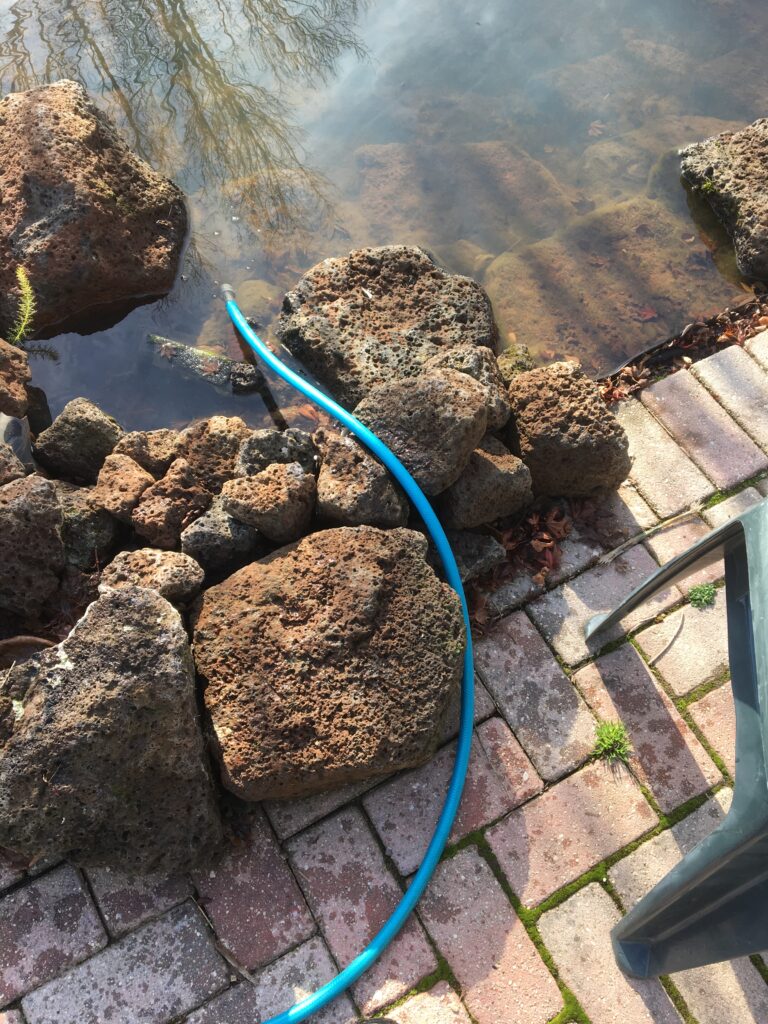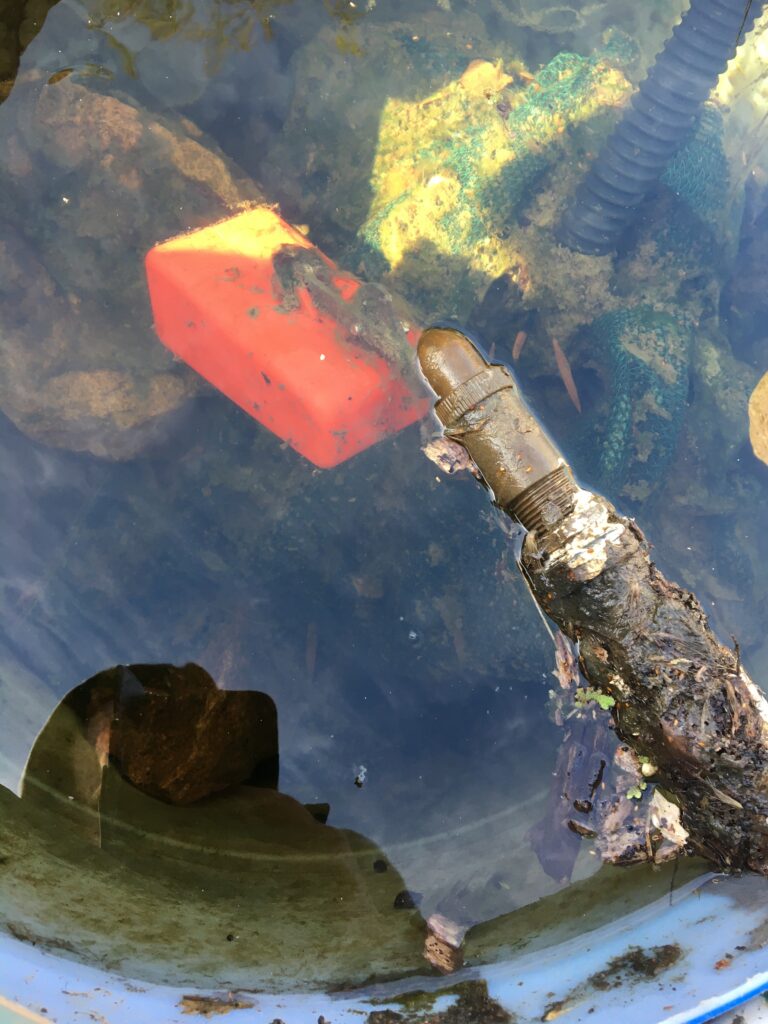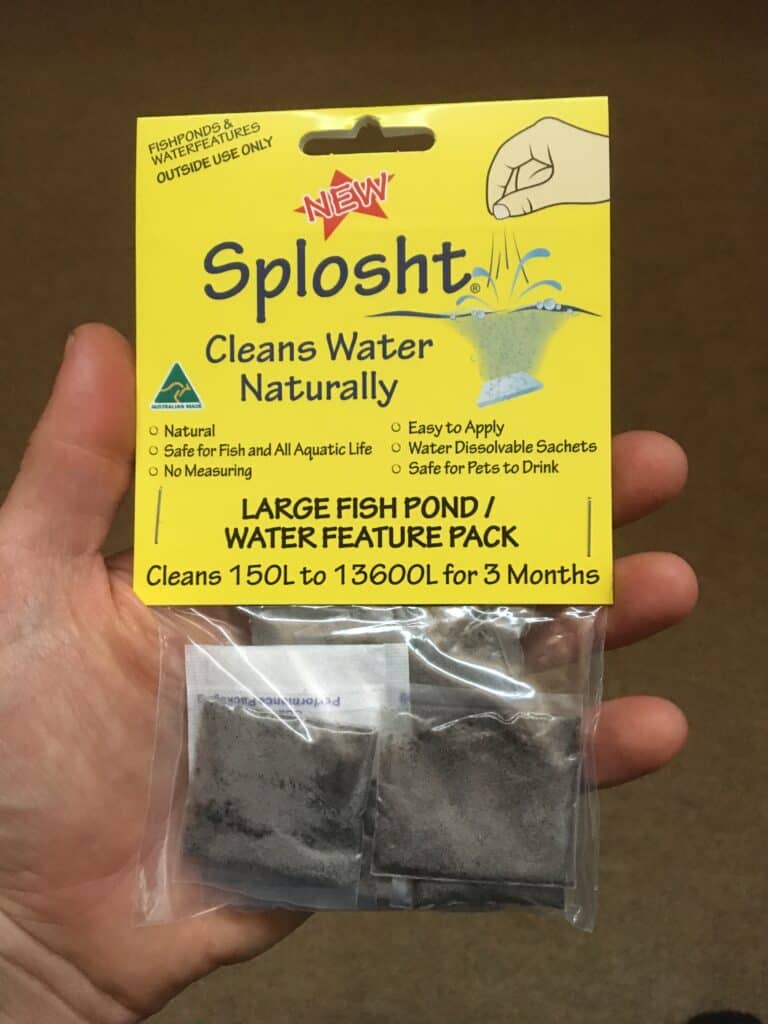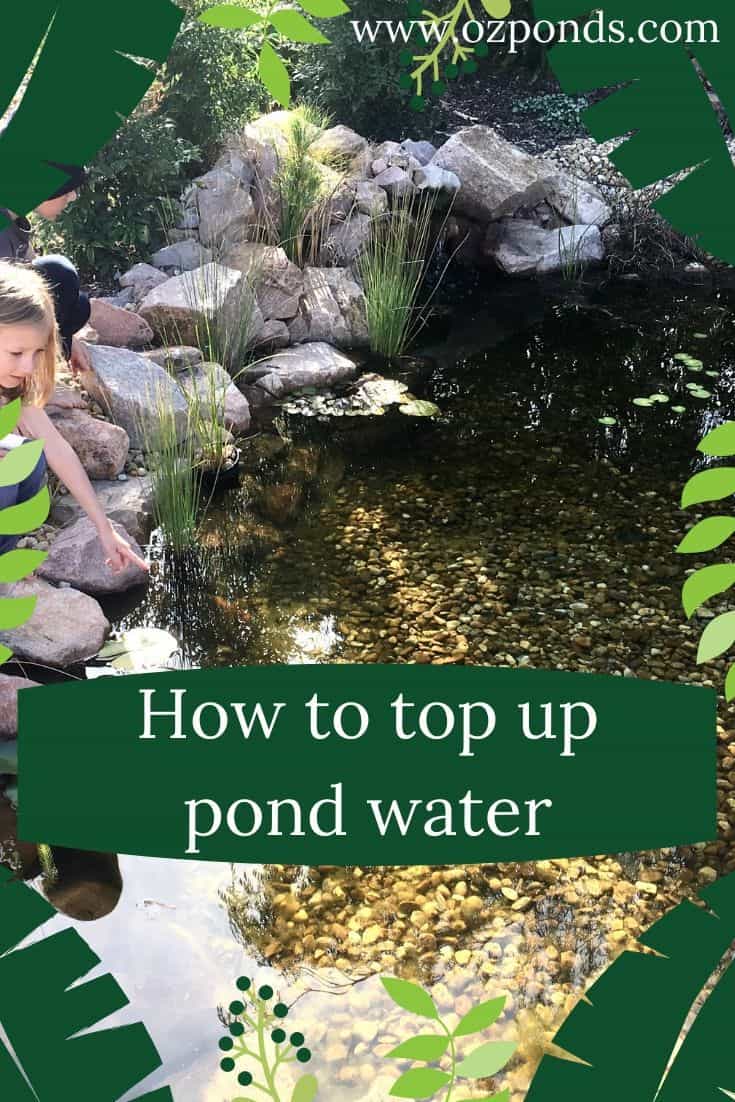Water authorities use chlorine to keep water safe for us to drink without getting sick.
The chlorine will need to be neutralised before topping up the pond.
Chlorine kills bacteria! Ponds need beneficial bacteria to maintain a healthy environment.
Ponds and other natural bodies of water rely on a natural process called the nitrogen cycle. Bacteria forms the backbone of the nitrogen cycle.
If you don’t know about or understand how the cycle works you should read our article on the nitrogen cycle for ponds.
The basic gist is: the nitrogen cycle converts ammonia into nitrite and nitrite into nitrate.

Can tap water be used to top up a pond?
In small doses the chlorine found in tap water will pose no major risk to the good bacteria in the pond.
Chlorine will actually fully evaporate in 24-48hrs.
You’ll run into problems if you use to much chlorinated water.
The most common way this happens is forgetting the hose is on.

It’s too easy to get sidetracked when topping up your pond. Many people have lost all their fish forgetting about the hose.
The reason this is so bad is because the water in the pond is effectively replaced.
So the good fish safe water with no chlorine is replaced by chlorinated water.
Chlorine is poisonous to the fish and disastrous for the good bacteria processing all the fish waste.
So the whole system will collapse.
How to safely use tap water to fill a pond
Theres a few ways.
Number one if using a hose to top up the pond don’t forget about it! If your only topping up 10% at a time you’ll be fine.
Number two use an auto-top up valve. This will just drip water into the pond once it drops below the float.

I love this method as it suits a lazy person like me!
Number 3 is adding a de-chlorinator whenever you add water tap water to your pond.
A de-chlorinator instantly detoxifies the water removing the chlorine and making it safe for bacteria and fish.
Could i fill a new pond with tap water?
Yeap. A brand new pond has no bacteria living in it and no fish.
As i mentioned the chlorine will evaporate naturally in 24-48hrs. Once the chlorine has evaporated the bacteria will begin colonising the pond.
To speed up the process in a new pond you can add beneficial bacteria to effectively seed the new pond.
Of course wait a couple of days for the chlorine to evaporate.
You may be impatient like me…. In that case you’ll need to go ahead and add a de-chlorinator before adding the beneficial bacteria.

de-chlorinator 
beneficial bacteria
Filling up the pond after a major clean out
From time to time most ponds are going to need a major clean out.
Overtime fish waste and other organic material will build up in the pond. The beneficial bacteria and micro-organisms will consume much of this waste, but not all.
So when it comes time to do a major clean there’s a few steps to take.
- Remove the fish.
- Keep the fish in water from the pond (its safe. ie. no chlorine)
- Add aeration to the tank, pool or temporary pond holding the fish.
- Keep and store as much water as possible form the pond. (Again this is cause it has no chlorine, so nice and safe.)
- Pressure wash the pond and remove any solid waste.
- Return the water to the pond.
- Top up the pond with water.
- Add a de-chlorinator. Be sure to add enough for the amount of water you are adding.
- Add beneficial bacteria. Again at the dosage prescribed for your ponds volume.
- Return the fish to the pond.
Following these steps will ensure that the water remains fish safe.
Adding the bacteria will compensate for all that were lost during the cleaning.
It’s obviously quite important when doing a major clean to have an idea about the volume of water your pond holds.
If your unsure follow my guide on how to calculate pond surface area and volume.
Utilising rainwater to fill up a pond
If possible using rainwater to fill up the pond is perfect.
Rainwater has no chlorine and is already totally safe for the fish and bacteria.
If using rainwater it doesn’t matter if you leave the hose on. All you’ve done is a water change.
That will cause no problems for the health of the pond, if anything its a benefit!
You can still connect an auto-top up valve to the rainwater tank for maintenance free ponds.
Another option for utilising rainwater is connecting a downpipe directly to the pond.
First you’ll run it through a first flush system to remove any solid materials like dust, dirt and leaves.
For obvious reasons you want to ensure you have an overflow system in place on the pond if utilising this method of pond top up.
A system like this replicates precisely what happens in nature. During heavy rains the whole system will receive a flush out.
The pond will also naturally rise and fall depending on the seasons and the rainfall.
Connecting stormwater to ponds and water gardens can be a great way to utilise and store this precious resource.
One thing you should be aware of is that rainwater particularly after a lightening storm will contain a certain amount of nutrients.
This is why you notice the garden looks more vibrant after a storm. This is the nitrogen in the rain.
Nitrogen is plant food. Algae is the first plant that shows up looking to consume nitrogen.
To combat this make sure you’ve got a good filtration system on the pond.
For this kind of pond connected to the stormwater, I recommend a bog/wetland filtration system.
You can learn more about bog/wetland filtration by clicking the link to read an article i wrote or watch the below video.
Now hopefully you understand how to safely top up your pond. Remember to subscribe to our mailing list to receive special offers and discounts on pond related products.

